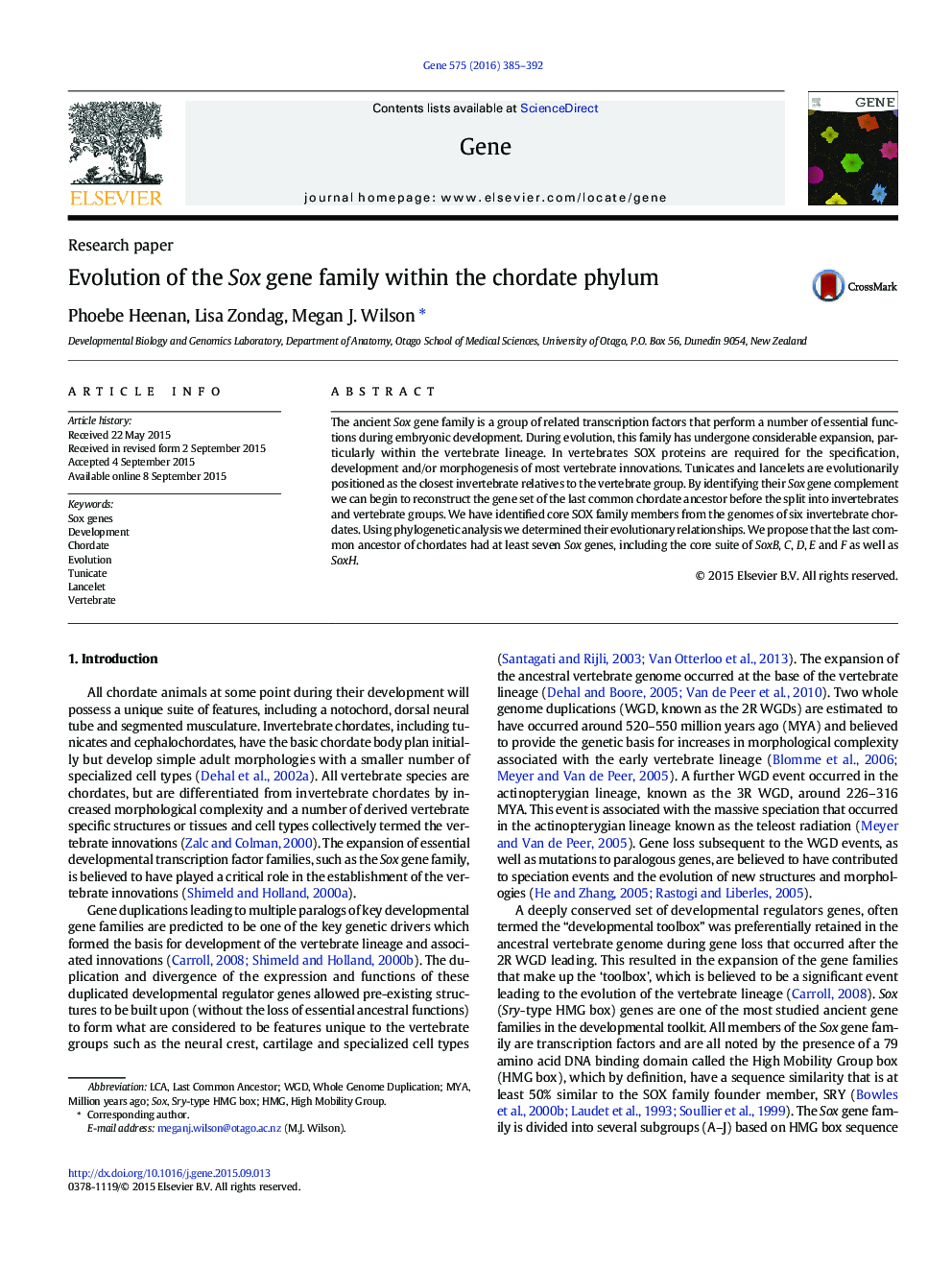| Article ID | Journal | Published Year | Pages | File Type |
|---|---|---|---|---|
| 2815477 | Gene | 2016 | 8 Pages |
•The number of Sox genes has remained stable since solitary and colonial ascidians separated.•Ciona sp. and Botryllus schlosseri genomes have a single C, D, E and F and two SOXB proteins.•Branchiostomafloridae genome encodes for 6 SoxB genes compared to an average of three in most chordate genomes.•Species-specific changes to SOX protein diversity is observed between the Florida and Chinese lancelet.•LCA of chordates had at least seven Sox genes, including the core suite of SoxB, C, D, E and F as well as SoxH.
The ancient Sox gene family is a group of related transcription factors that perform a number of essential functions during embryonic development. During evolution, this family has undergone considerable expansion, particularly within the vertebrate lineage. In vertebrates SOX proteins are required for the specification, development and/or morphogenesis of most vertebrate innovations. Tunicates and lancelets are evolutionarily positioned as the closest invertebrate relatives to the vertebrate group. By identifying their Sox gene complement we can begin to reconstruct the gene set of the last common chordate ancestor before the split into invertebrates and vertebrate groups. We have identified core SOX family members from the genomes of six invertebrate chordates. Using phylogenetic analysis we determined their evolutionary relationships. We propose that the last common ancestor of chordates had at least seven Sox genes, including the core suite of SoxB, C, D, E and F as well as SoxH.
